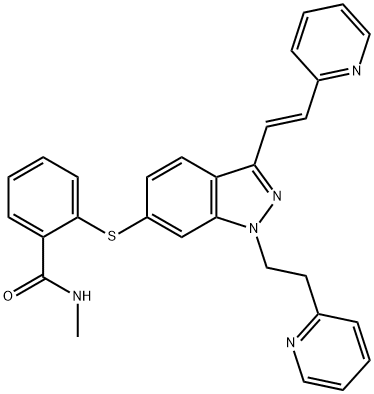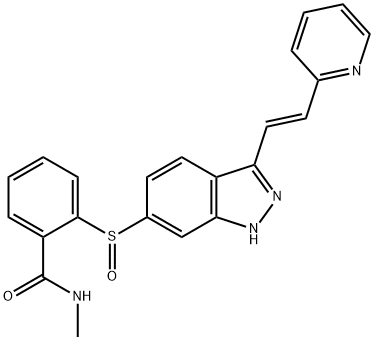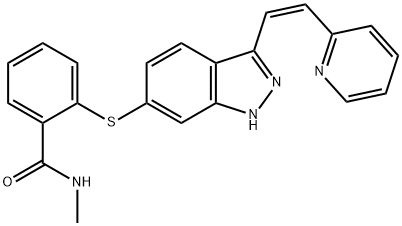Axitinib-13C-d3 , ≥99% , 1261432-00-1
| Pack Size | Price | Stock | Quantity |
| 500ug | RMB5872.00 | In Stock |
|
| 1mg | RMB11152.00 | In Stock |
|
| others | Enquire |
PRODUCT Properties
| Density | 1.357±0.10 g/cm3(Temp: 25 °C; Press: 760 Torr)(predicted) |
| storage temp. | Store at -20°C |
| solubility | DMSO: soluble |
| form | A solid |
| color | White to off-white |
Description and Uses
Axitinib-13C-d3 is intended for use as an internal standard for the quantification of axitinib by GC- or LC-MS. Axitinib is a VEGFR inhibitor (IC50s = 1.2, 0.25, and 0.29 nM for VEGFR1, -2, and -3, respectively). It also inhibits c-Kit and PDGFRβ (IC50s = 1.7 and 1.6 nM, respectively). It inhibits VEGF-induced migration of and tube formation by human umbilical vein endothelial cells (HUVECs). Axitinib (1-100 mg/kg) reduces microvessel density, a marker of angiogenesis, and tumor growth in MV522 colon carcinoma, A375 melanoma, SN12C-GFP renal carcinoma, and U87 glioma mouse xenograft models in a dose-dependent manner. Formulations containing axitinib have been used in the treatment of renal cell carcinoma.
Axitinib-13C,d3 is a 13C-labeled and deuterium labeled Axitinib. Axitinib is a multi-targeted tyrosine kinase inhibitor with IC50 values of 0.1, 0.2, 0.1-0.3, 1.6 nM for VEGFR1, VEGFR2, VEGFR3 and PDGFRβ, respectively[1][2].
Safety
| Symbol(GHS) |  GHS07 |
| Signal word | Warning |
| Hazard statements | H302+H312+H332-H315-H319 |
| Precautionary statements | P261-P264-P270-P271-P280-P301+P312-P330-P302+P352-P321-P304+P340-P305+P351+P338-P332+P313-P362+P364-P337+P313-P501 |




![2-[(3-iodo-2H-indazol-6-yl)sulfanyl]-N-methylbenzamide](https://img.chemicalbook.com/CAS/GIF/885126-34-1.gif)

